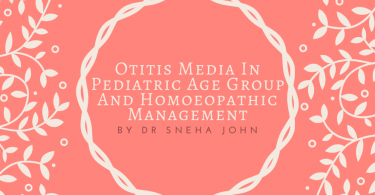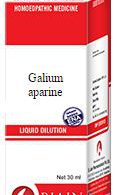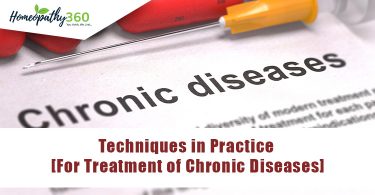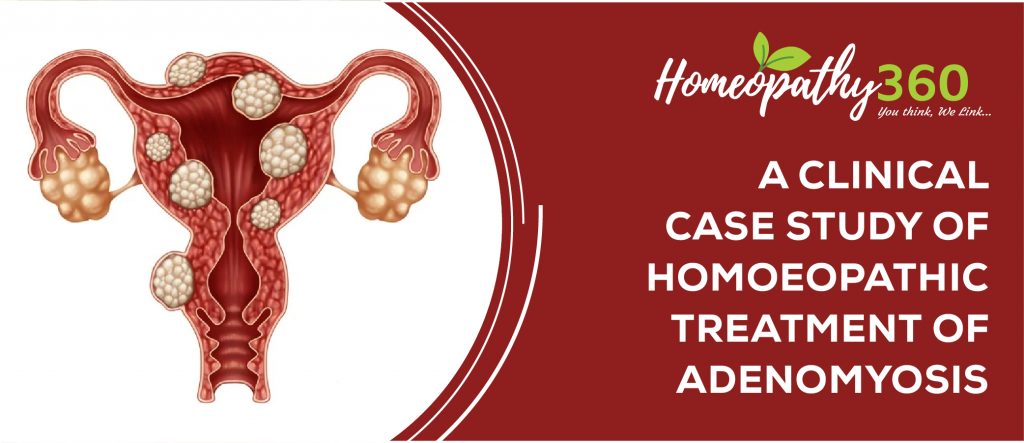
Abstract:
Adenomyosis a commonly diagnosed disease condition especially in women of reproductive age group. Increasing use of hormonal pills is being attributed as a main contributory factor. In many cases, the cause is unknown, hence its management is challenging. Such conditions can be treated very effectively through an individualised holistic approach of the homoeopathic mode of treatment.
This case report shows the efficacy of the homoeopathic mode of treatment in cases of surgical diseases like adenomyosis.
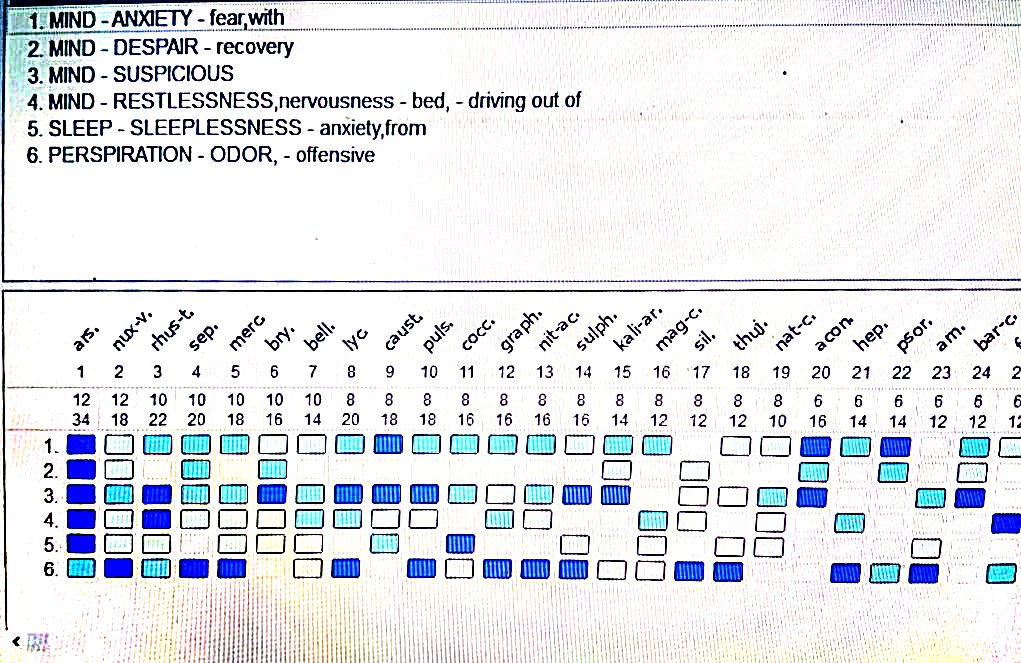
Abbreviations: randomised controlled trial (RCT), ultrasonography (USG), Rubrum metallicum i.e. placebo (Rub. Met), once daily (OD), no abnormality detected (NAD)
Introduction:
Adenomyosis is a condition where there is ingrowth of the endometrium, both the glandular and stromal component, directly into the myometrium1. Recent studies estimate a prevalence of adenomyosis among females younger than 40 years to be about 20–30%, while in the rest of the patients, diagnosis is usually established in the fourth or fifth decade.2 Hysterectomy is the usual treatment of choice in the conventional method. Avoidance of surgery and preservation of uterus, especially in the reproductive age group, should be the treatment of choice.
Here is the case of a lady aged about 42 years, presented with the complaints of pain and heaviness in lower abdomen and dyspareunia since last 4 years. She had long history of taking hormonal pills due to secondary amenorrhoea in the past. The perimenopausal age group and excess of oestrogen are the known risk factor for development of adenomyosis in this case. Her USG report on 21-02-2019 showed normal-sized uterus with mildly homogenous uterine echotexture with raised vascularity predominating along the posterior wall suggestive of adenomyosis. Endometrium measures 4.5 mm. Oval cystic loculated collection in both adnexae.
After thorough case taking the following symptoms were evaluated prominently:
| Mental generals | Physical generals | Particular symptoms |
| Anxiety about health, about her family, about her future | Sleeplessness from anxiety. She keeps moving in her house in the night due to fear and anxiety. Dream of ghosts. | Dragging pain in lower abdomen, aggravated during sitting, ameliorated by moving about |
| Hopelessness of recovery – as she has suffered long from these complaints with lots of medication in the past. She was not hopeful of recovering from this condition. | Very offensive perspiration. Stool mostly constipated, sometimes at 2 – 3 days interval. Urine – burning in urethra during micturition. Hot urine. | On examination – tenderness in the lower abdomen. |
| Fear of death and some grave conditions about to happen. Fear and anxiety very much prominent in her. | Always desire for warm food. Diminished appetite. |
After evaluation and analysis of the case, the following symptoms were considered for repertorisation and form the totality of symptoms:
Justification of selection of remedy: Considering the present state of the patient and her dominant miasm, these rubrics were selected. Based on this totality of symptoms, repertorisation of these rubrics from Kent’s Repertory of Homoeopathic Materia Medica, and after consulting with materia medica and supported by observational symptoms (like restlessness, impatient nature of the patient), Arsenicum album was found to be the leading remedy covering the essence of the case. So, Arsenicum album was prescribed to the patient.
Justification of selection of potency: Based on the susceptibility of the patient, nature and intensity of the disease, stage and duration of the disease and previous treatment of the patient, Arsenicum album was given in 200th potency to the patient. When the case came to standstill condition after certain improvement, Arsenicum album 1M was prescribed (as totality of symptoms was the same) as directed by Dr J.T. Kent in his article “Series and Degrees”.
Follow-up:
| Date | Symptoms | Prescription |
| 16-02-2019 | 1. Arsenicum album 200/OD * 3 day 2. Bilogen 500/ BD* 7 day | |
| 26-02-2019 | Heavyness of abdomen and lower abdominal pain were slightly relieved. | Rub. met 200/ OD * 30 day |
| 15-03-2019 | Condition was standstill. | Arsenicum album 200/ OD * 2 dayBilogen 500/ OD * day |
| 04-05-2020 | Pain and heaviness in abdomen- much improved. Stool – clear. Sleep – improved. | Rub. Met. 500/OD * 30 day |
| 20-06-2019 | Pain and heaviness in abdomen- much improved. Stool- clear. Sleep- improved | Rub. Met. 700/od * 30 day |
| 29-07-2019 | Condition was standstill, | Arsenicum album 1 M/ OD* 30 dayRub. Met. 500/OD * 30 day |
| 24-08-2019 | Pain and heaviness in abdomen- totally improved. Stool- regular, clear. Sleep- sound. Appetite- good. Physical examination- NAD | Rub. Met. 500/OD * 30 day |
| 26-9-2019 | General improvement in all aspect. | Rub. Met. 500/OD* 30 day |
| 25-10-2019 | General improvement in all aspect | Rub. Met. 500/OD* 30 day |
| 22-11-2019 | General improvement in all aspect | Rub. Met. 500/OD* 30 day |
| 20-12-2019 | General improvement in all aspect | Rub. Met. 500/OD* 30 day |
| 30-01-2020 | General improvement in all aspect | Rub. Met. 500/OD* 30 day |
On 20-08-2019, USG report shown as small sized heterogenous uterus. 2 mm thin endometrium. Normal ovaries with no significant flow within. Adnexal cystic mass seen in the previous scan of february 2019 was not seen in the current scan.
The USG report showed total pathological improvement and general improvement of the patient in term of her complaints and other generalities, patient showed total improvement. She was kept on followup for more than 6 months, but no further complaints were noted.
Modified Naranjo criteria 3,4 as proposed by the Homoeopathic Pharmacopoeia of United States clinical data working group:
| Serial number | Question | Answer of the patient /assessment | scaore |
| 1. | Was there an improvement in the main symptom or condition for which the Homoeopathic medicine was prescribed? | yes | +2 |
| 2. | Did the clinical improvement occur within a plausible timeframe relative to medicine intake? | yes | +1 |
| 3. | Was there an initial aggravation of symptoms? | no | 0 |
| 4. | Did the effect encompass more than the main symptom or condition i.e. did the other symptoms ultimately improve or change? | yes | +1 |
| 5. | Did overall well-being improve? | yes | +1 |
| 6(a) | Direction of cure, did some symptoms improve in the opposite order of development of symptoms of disease? | Not sure | 0 |
| 6(b) | Direction of cure, did at least two of the following aspects apply to the order of improvement of symptoms? From organ of more importance to those of less importanceFrom deeper to more superficial aspects of the individualFrom the top to downwards | Not sure | 0 |
| 7. | Did old symptoms (defined as non-seasonal and non-clinical symptoms) that were previously thought to have resolved reappear temporarily during the course of improvement? | No | 0 |
| 8. | Are there alternative causes (other than the medicine) that with a high probability – could have caused the improvement? (consider known course of disease, other form of treatment and other clinical relevant interventions) | No | +1 |
| 9. | Was the health improvement confirmed by any objective evidence? (example,- lab test, clinical observation etc.) | yes | +2 |
| 10. | Did repeat dosing, if conducted, create similar clinical improvement? | yes | +1 |
| TOTAL SCORE | +9 |
Applying the Modified Naranjo criteria in this case, score of +9 came out, which clearly indicates the positive causal relationship between the homoeopathic medicine given to the patient and positive outcome.
Discussion:
The homoeopathic law establishes a definite relation, not only between proved drugs and
known diseases, but between all the unexplored medical wealth and undeveloped requirement
of sickness. Like the law of gravitation, The law of cure as taught by Hahnemann is not, andcannot be limited to a small group of conditions; the limitations rest entirely with our
ignorance.5
The mere removal of tangible products of disease as in the case of tumours or external visible signs (eruptions and discharges) by topical applications , not only does not cure the disease, but does the patient a positive injury through suppression and renders the case inveterate or more difficult to cure.6
Surgery in the usual treatment of choice for adenomyosis in the conventional mode of treatment. After hysterectomy and hormonal therapy, side effects are numerous. Surgical diseases like adenomyosis can be treated with constitutional homoeopathic medicines very effectively.
Conclusion: This case study shows that the homoeopathic mode of treatment is very effective in managing and curing surgical diseases like adenomyosis. This scope of homoeopathy has to be explored through research work on large sample sizes through pilot studies or randomised controlled trials.
References:
- Dutta DC. Textbook of Gynaecology including Contraception. New Central Book Agency. 5th Ed. 2008. P303-304
- Dessouky R. Gamil S.A. et. al. Management of uterine adenomyosis: current trends and uterine artery embolization as a potential alternative to hysterectomy. Available from: https://insightsimaging.springeropen.com/articles/10.1186/s13244-019-0732-8/last cited on 25-08-2020
- Lamba CD. et. al. Evaluation of the Modified Naranjo Criteria for Assessing Causal Attribution of Clinical Outcome to Homeopathic Intervention as Presented in Case Reports. Available from: https://pubmed.ncbi.nlm.nih.gov/32215892/ cited on 25-08-2020
- Rutten L. Prognostic factors research in Homoeopathy. Indian J Res Homoeopathy 2016;10:59-65
- Roberts HA. The Principles and Art of cure by Homoeopathy. Low price ed. 2002. B.
Jain Publ. New Delhi- 110055.P93
- Close S. The Genius of Homoeopathy. Reprint ed. 2000. B. Jain Publ. New Delhi-
- 110055.p73
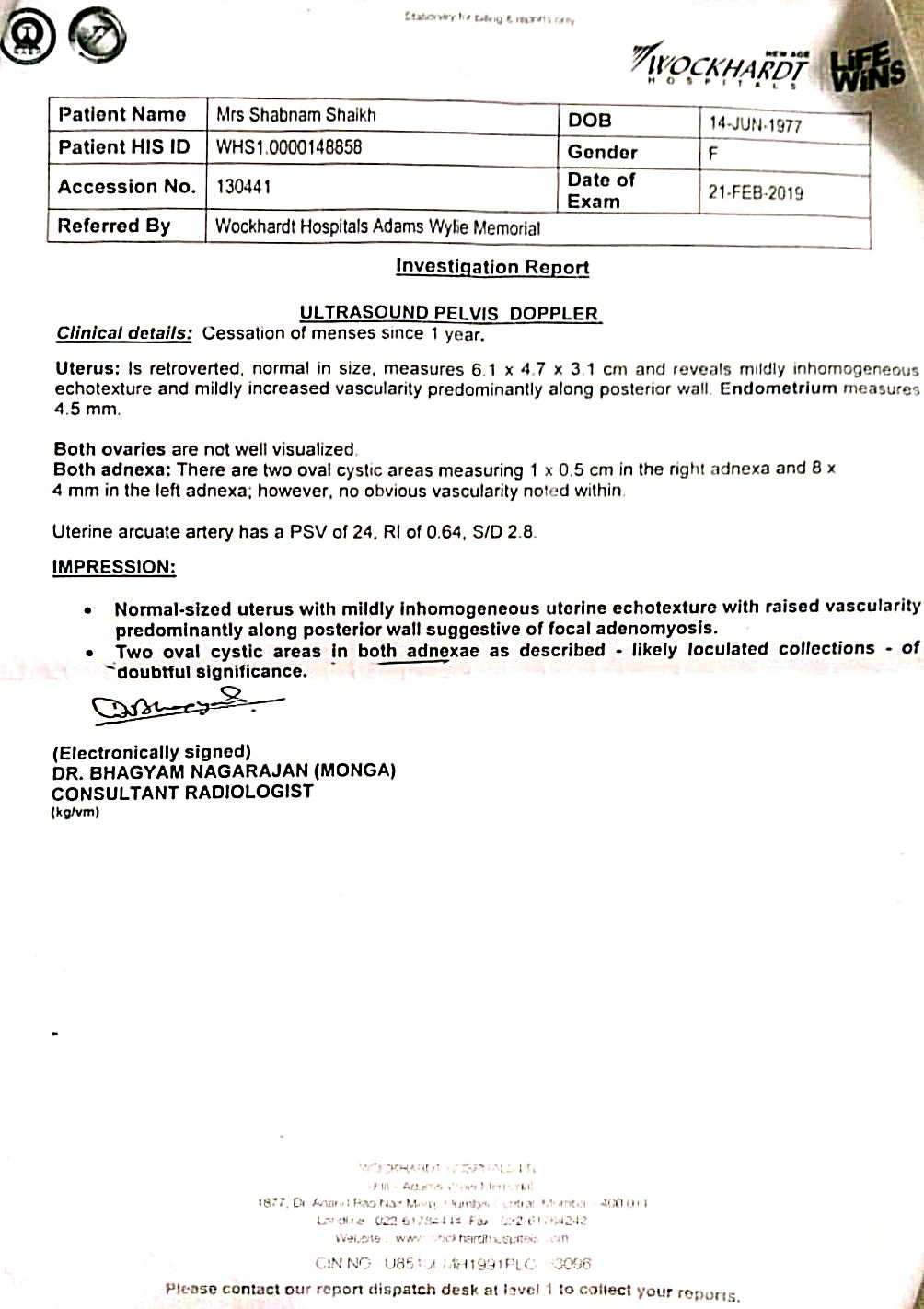
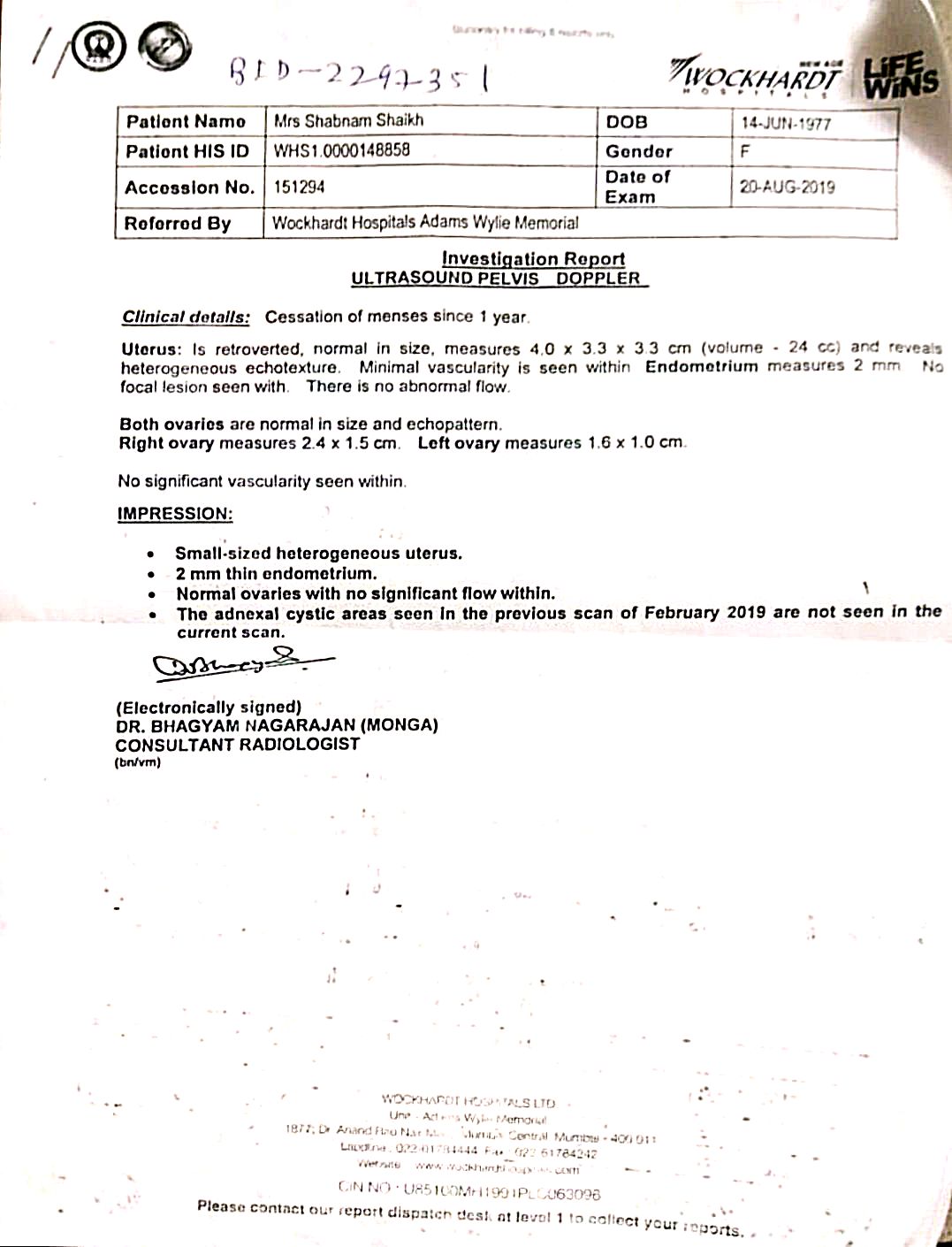
About the authors:
- Dr Awadhesh Kumar Thakur, Medical officer (Homoeopathy), Central Government Health Scheme, Government of India.
- Dr KM Priyanka – Assistant Professor, Department of Materia Medica, Maharshi Menhi Homoeopathic Medical College and Hospital, Katihar, Bihar.


